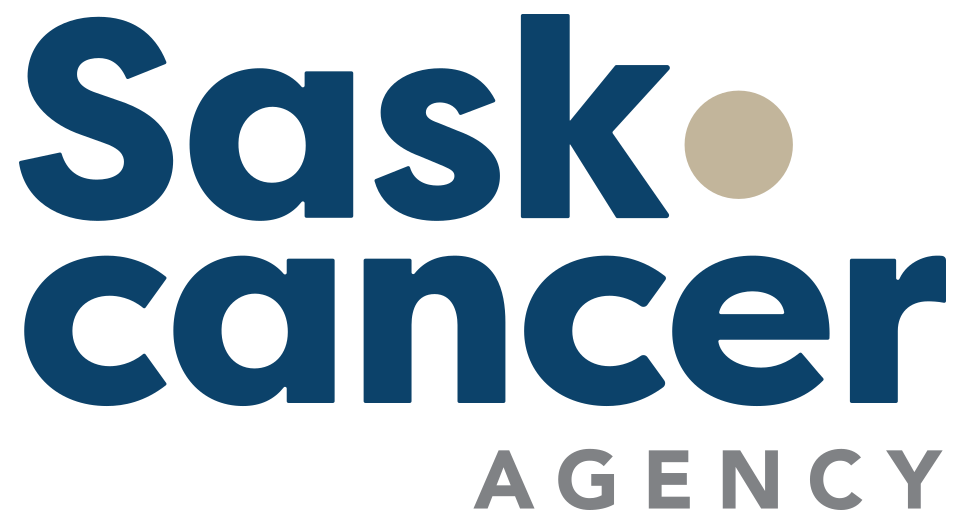Cancer Registry
The Saskatchewan cancer registry is a population-based registry and information system designed for the collection, management and analysis of data for residents diagnosed with cancer in the province. The registry links with Saskatchewan Vital Statistics to receive notification on deaths for case ascertainment.
All Canadian provinces and territories have cancer registries to collect cancer information on their own residents. The information is reported to cancer registries through other healthcare facilities or providers that diagnose or treat cancer cases. This may include hospitals, pathology laboratories, ambulatory surgical treatment centres, nursing homes, healthcare practitioners and diagnostic centres.
The registry, in turn, provides data to healthcare providers, administrators, and researchers in support of cancer research projects in order to monitor cancer trends and to plan appropriate cancer control strategies, such as cancer screening programs.
History
Saskatchewan is home to one of the world’s oldest cancer registries.
The Saskatchewan Cancer Commission Act of 1930 provided authorization for the establishment of a cancer control program in Saskatchewan. In 1932 comprehensive diagnostic and treatment services for cancer for all residents of the province were initiated. In 1944 The Cancer Control Act Regulations stated “All patients who are residents and have been residents of Saskatchewan for at least six months immediately prior to making application to a Clinic shall be entitled to care and treatment at the expense of the Province.” It also stated that patients must be referred to the clinics and physicians must submit a detailed report to the clinic. The province would only pay for services if patients had been properly referred. In 1979 The Saskatchewan Cancer Foundation Act was passed, establishing a Foundation to replace the Cancer Commission. On January 2, 2007 The Saskatchewan Cancer Agency Act was passed, replacing The Cancer Foundation Act.
The cancer registry has been electronic since 1966. In 1977, a computerized system was created. Cases from 1967-1977 were back-coded onto the electronic system. Currently there are approximately 330,000 patients on the database and 463,000 records.
We are proud of the legacy of our registry and the standing it holds nationally and internationally.
Legislative and Reporting Requirements
The Cancer Agency Act and Regulations mandates the collection of specific cancer information. For purposes of outcome analysis and surveillance, the registry may continue to collect information in specific situations even after services have ceased to be provided by the Saskatchewan Cancer Agency to the individual. As the trustee of this data, the Agency has a duty to protect personal health information. The Health Information Protection Act states that: Subject to the regulations, a trustee that has custody or control of personal health information must establish policies and procedures to maintain administrative, technical and physical safeguards that will:
- Protect the integrity, accuracy and confidentiality of the information
- Protect against any reasonably anticipated:
- Threat or hazard to the security or integrity of the information
- Loss of the information
- Unauthorized access to or use, disclosure or modification of the information, and
- Otherwise ensure compliance with this Act by its employees
Content
Information maintained in the registry may include, but is not limited to:
- Demographics – age, gender, birthplace, residence
- Medical history – physical findings, screening information, occupation, history of previous cancer
- Diagnostic findings – types, dates and results of procedures used to diagnose cancers
- Cancer Information – primary site, cell type, extent of disease, and stage
- Cancer therapy – surgery, radiation therapy, chemotherapy, hormone or immunotherapy
- Follow-up – annual information about treatment, recurrence and patient status
- Death information – date, cause and place of death
Cancer Registry Data Dictionary (updated March 2022)
Data Use
The information collected is used by public health and medical providers in a variety of ways:
- Evaluate patient outcome and quality of life
- Provide follow-up information for cancer surveillance
- Calculate survival rates by utilizing various data items and factors
- Provide information for cancer program activities
- Analyze referral patterns
- Allocate resources at a healthcare facility or provincial level
- Develop educational programs for healthcare providers, patients and public
- Report cancer incidence as required under provincial and national legislation
- Evaluate efficacy of treatment modalities
- Performance measurement
The information is also used by the Agency for:
- Measuring, evaluating and monitoring the quality and safety of the care and services the Agency provides
- Internal reporting
- Annual report
- Saskatchewan Cancer Control Report
- Budget preparation
- Internal studies and research
- Information requests
Reporting Cancer Information
Cancer registry data has been reported to the Canadian Cancer Registry since 1992, and reported to and certified by the North American Association of Central Cancer Registries (NAACCR) since 1995. The data sent to NAACCR is included in their publication Cancer Incidence in North America. Since 1960 data has also been reported to the International Association for Research on Cancer for inclusion in their publication Cancer Incidence in Five Continents.
Data Quality and Accreditation
The Canadian Cancer Registry provides a yearly report to each of the provincial and territorial registries that evaluates the quality and comprehensiveness of the data in order to assist the registry in monitoring the quality of their own data.
NAACCR provides yearly accreditation to cancer registries for the quality, completeness and accuracy of their data. The Saskatchewan cancer registry has received Gold Standard Certification from NAACCR for its 2006 cases forward. The registry also participates in accreditation through Accreditation Canada.
Statistics
All cancer cases are coded according to ICD-O-3 and causes of death are coded using ICD-10. Approximately 12,000 new cases of cancer are registered per year, including non-melanoma skin cancer. We use Surveillance, Epidemiology and End Results Program (SEER) Multiple Primary and Histology Rules (MP/H), and Solid Tumour Rules (STR) to determine multiple primary cases.
Learn More |


